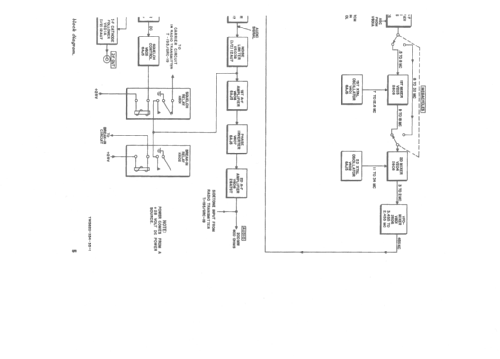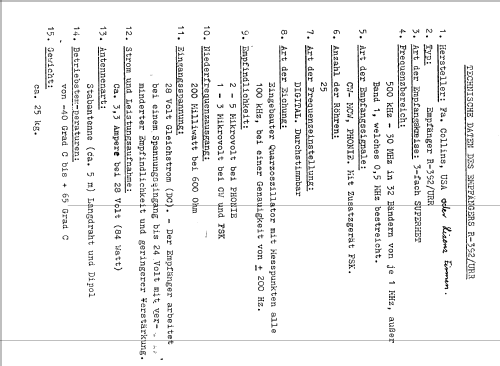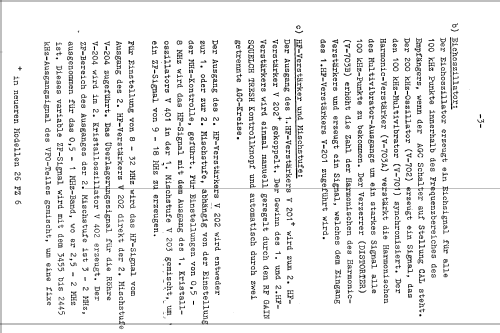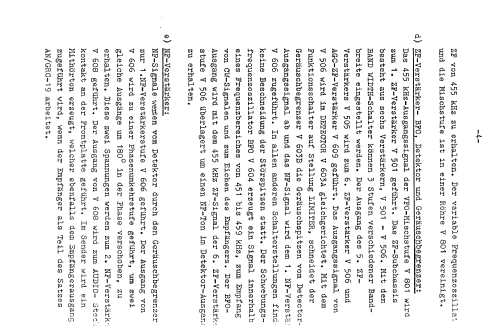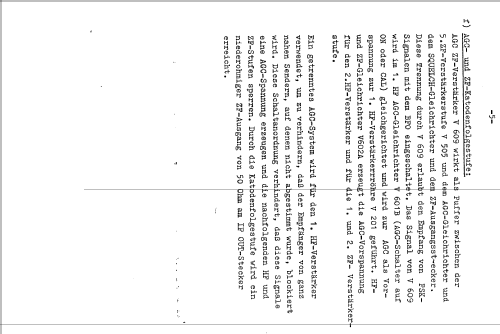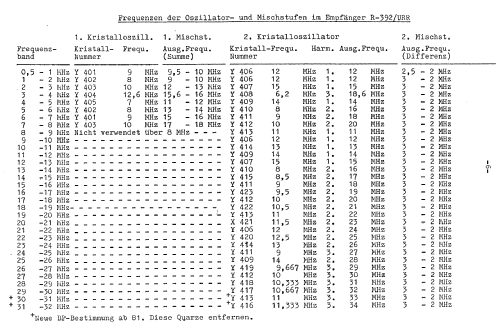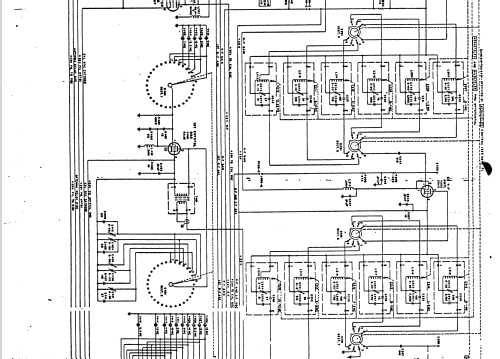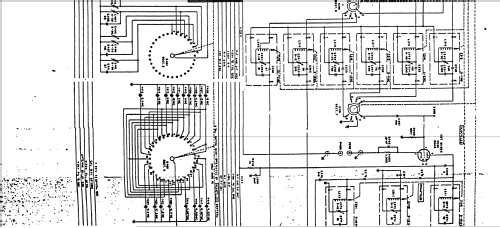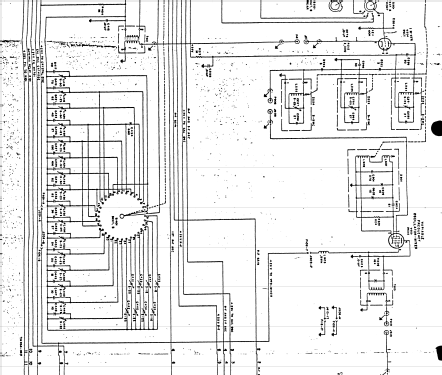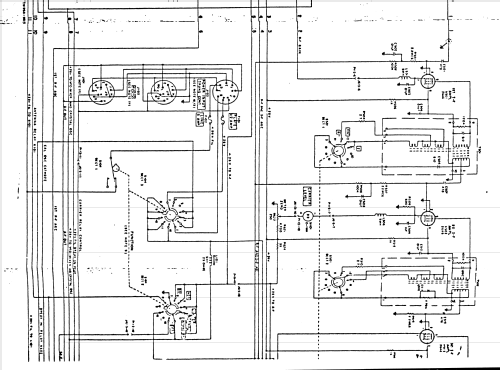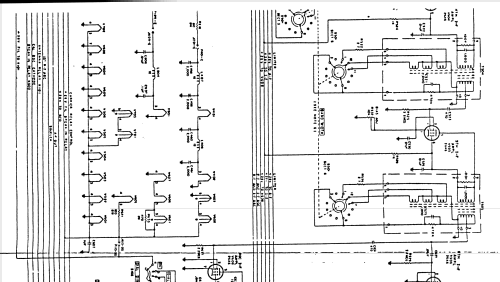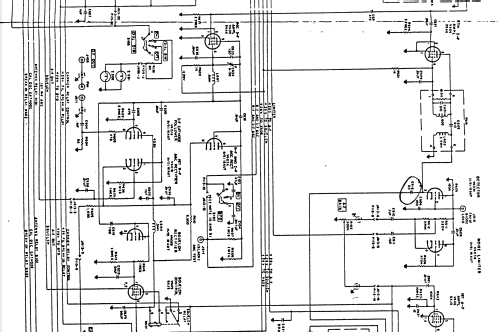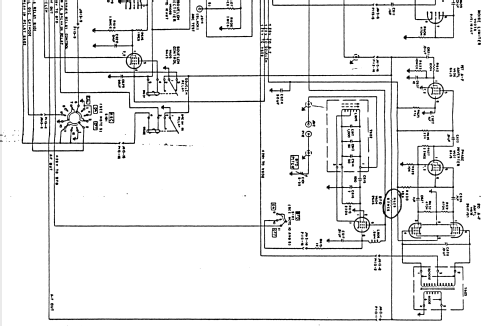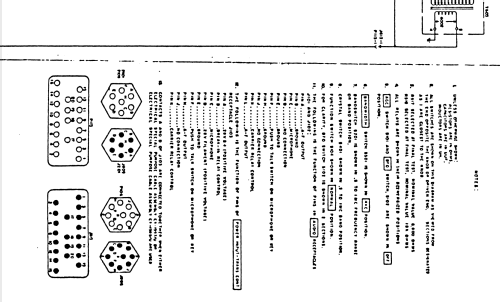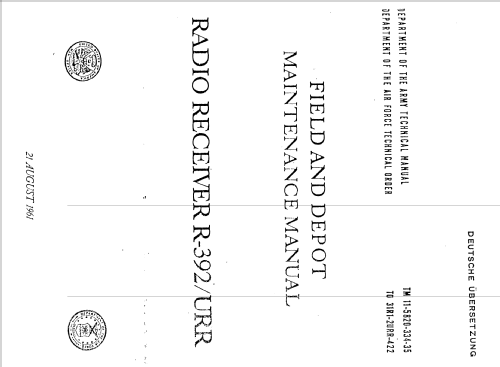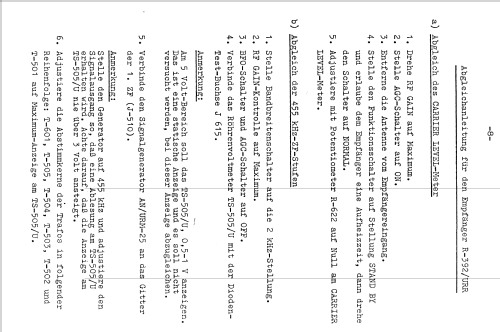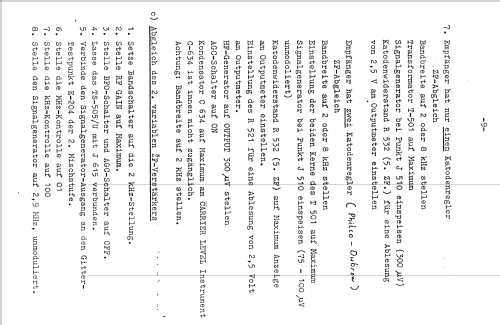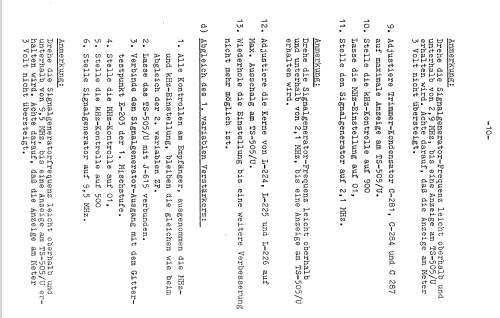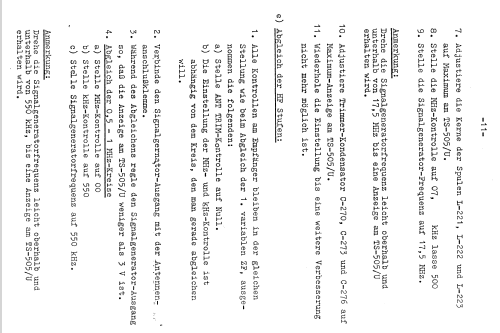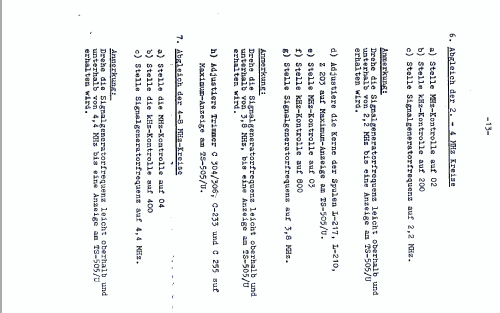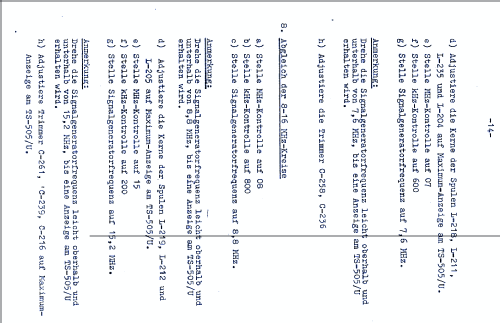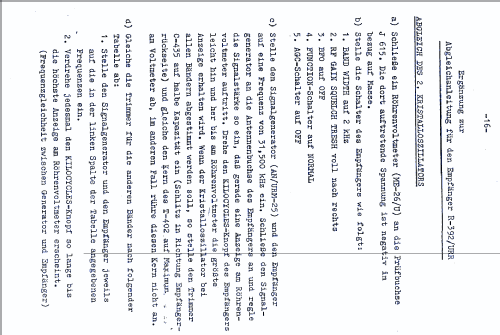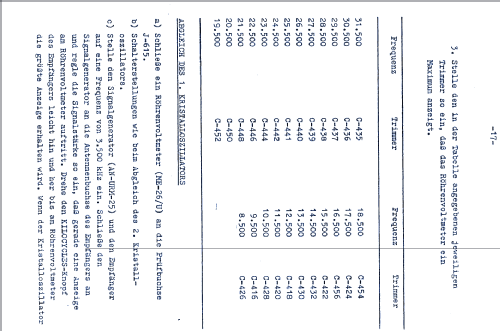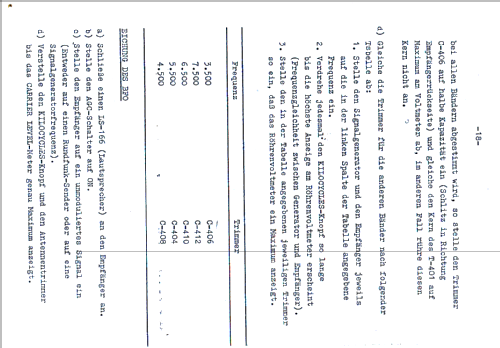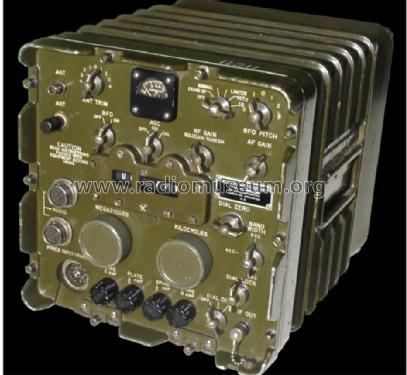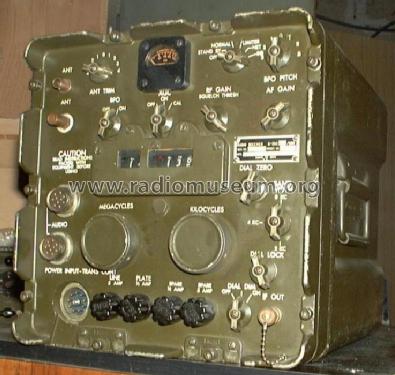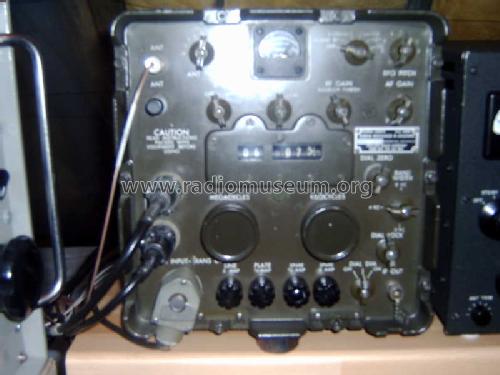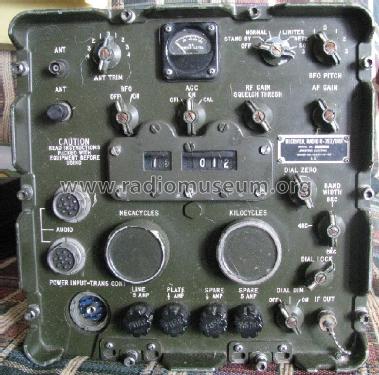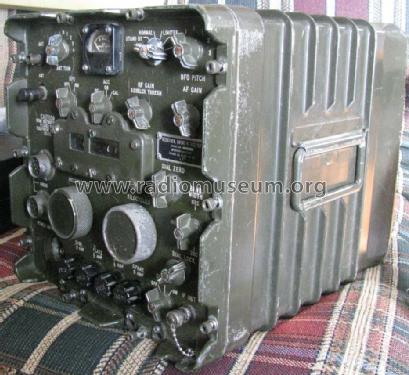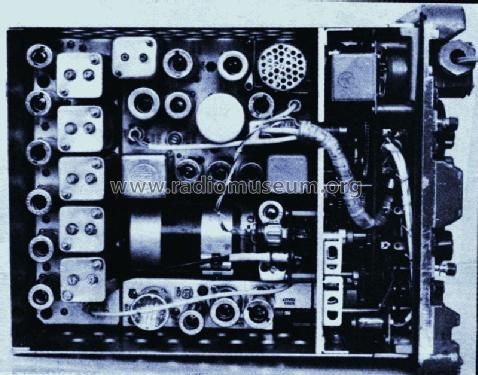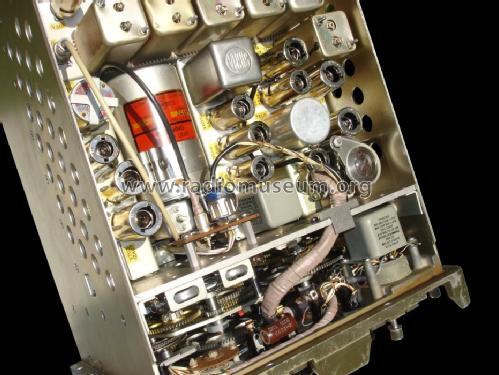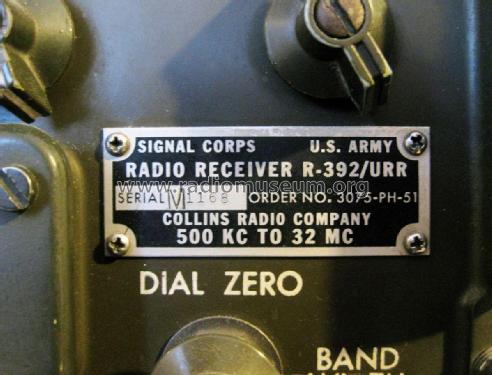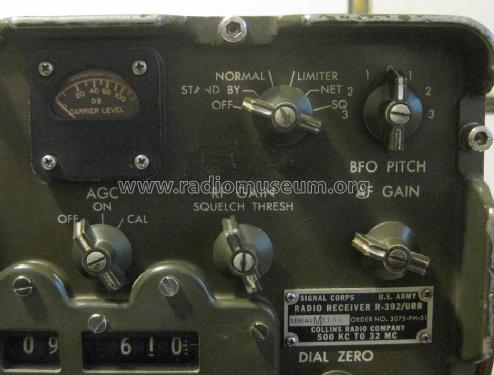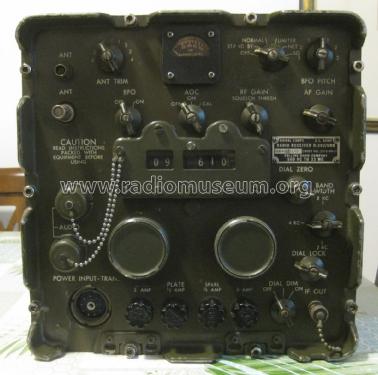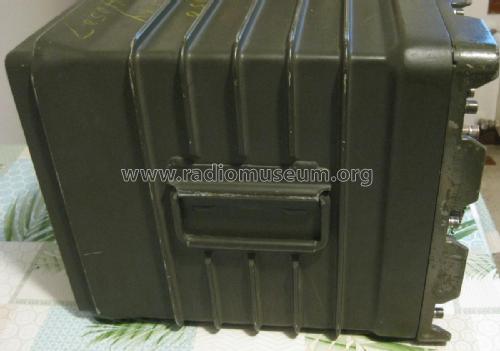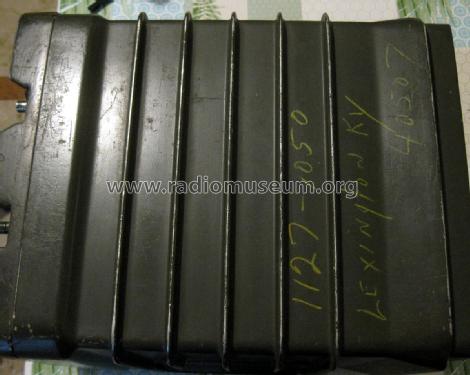R-392/URR
Collins Radio Company; Cedar Rapids (IA)
- Country
- United States of America (USA)
- Manufacturer / Brand
- Collins Radio Company; Cedar Rapids (IA)
- Year
- 1951–1962
- Category
- Commercial Receiver (may include amateur bands)
- Radiomuseum.org ID
- 72005
Click on the schematic thumbnail to request the schematic as a free document.
- Number of Tubes
- 25
- Valves / Tubes
- 26A6 26A6 26C6 26C6 6AJ5 6AJ5 26A6 26A6 26A6 26A6 26A6 26A6 12AU7 12AU7 12AU7 26A6 6AJ5 6AJ5 6AJ5 26A7GT 26A6 12AU7 26A6 12AU7 26D6
- Main principle
- Superhet, double/triple conversion
- Wave bands
- Broadcast plus more than 2 Short Wave bands.
- Power type and voltage
- Storage and/or dry batteries / 24-28 Volt
- Loudspeaker
- - For headphones or amp.
- Power out
- 0.2 W (unknown quality)
- Material
- Metal case
- from Radiomuseum.org
- Model: R-392/URR - Collins Radio Company; Cedar
- Shape
- Tablemodel, with any shape - general.
- Dimensions (WHD)
- 295 x 295 x 360 mm / 11.6 x 11.6 x 14.2 inch
- Notes
-
Collins R-392/URR radio receiver: coverage 0.5 to 32 MHz in 32 bands, CW (A1)/ MCW (A2)/ AM (A3)/ FSK (F1) with a matching converter.
Triple conversion below 8 MHz (IF 9.5-18 MHz / 2-3 MHz / 455 kHz), double conversion above (IF 2-3 MHz and 455 kHz). 2 RF stages + 6 IF stages. Three selectable IF-bandwidths (8 / 4 / 2 kHz), AGC, 100 KHz crystal-calibrator. PTO-VFO. Frequency readout provided by 5 digits mechanical counter. All connections on the front panel.
Also made by other manufacturers.
Low supply tubes used, partly 26A6 has been replaced 26FZ6. Tube spares case CY-1298/URR.
Used as a part of AN/GRC-19 vehicular system, matching transmitter T-195, or also as standalone FSK radioteletype receiver system.
- Net weight (2.2 lb = 1 kg)
- 23.7 kg / 52 lb 3.2 oz (52.203 lb)
- Source of data
- -- Original-techn. papers.
- Mentioned in
- Shortwave Receivers - Past & Present (3rd ed.)
- Literature/Schematics (1)
- Communications Receivers
- Author
- Model page created by Alexander Küffer. See "Data change" for further contributors.
- Other Models
-
Here you find 100 models, 77 with images and 35 with schematics for wireless sets etc. In French: TSF for Télégraphie sans fil.
All listed radios etc. from Collins Radio Company; Cedar Rapids (IA)
Collections
The model is part of the collections of the following members.
Forum contributions about this model: Collins Radio: R-392/URR
Threads: 2 | Posts: 2
Allego il foglio di collaudo del ricevitore, con le misure di sensibilità in uV per un SINAD di 10 dB. Data: 5 giugno 1969.

Attachments
- Receiver Test Data Sheet (230 KB)
Tonino Giagnacovo, 03.Jan.16
From the original instruction book, here the tube layout informations necessary for troubleshooting this receiver:
| V201 | 26A6 | 1st R-F Amplifier RF |
| V202 | 26A6 | 2nd R-F Amplifier RF |
| V203 | 26C6 | 1st Mixer RF |
| V204 | 26C6 | 2nd Mixer RF |
| V401 | 6AJ5 | 1st Crystal Oscillator CRY |
| V402 | 6AJ5 | 2nd Crystal Oscillator CRY |
| V501 | 26A6 | 1st I-F Amplifier I-F |
| V502 | 26A6 | 2nd I-F Amplifier I-F |
| V503 | 26A6 | 3rd I-F Amplifier I-F |
| V504 | 26A6 | 4th I-F Amplifier I-F |
| V505 | 26A6 | 5th I-F Amplifier I-F |
| V506 | 26A6 | 6th I-F Amplifier I-F |
| V601A/B | 12AU7 | I-F Cathode Follower / 1st R-F AGC Rectifier A-F |
| V602A/B | 12AU7 | R-F and I-F AGC Rectifier A-F |
| V603 | 12AU7 | Detector / Noise Limiter A-F |
| V604 | 26A6 | BFO A-F |
| V605 | 6AJ5 | Squelch Control A-F |
| V606 | 6AJ5 | 1st A-F Amplifier A-F |
| V607 | 6AJ5 | Phase Inverter A-F |
| V608 | 26A7GT | 2nd A-F Amplifier A-F |
| V609 | 26A6 | AGC I-F Amplifier A-F |
| V701 | 12AU7 | Multivibrator CAL |
| V702 | 26A6 | 200 kHz Crystal Oscillator CAL |
| V703A/B | 12AU7 | Harmonic Amplifier / Distorter CAL |
| V801 | 26D6 | VFO - Mixer VFO |
I-F: located on IF-Subchassis
A-F: located on A-F Subchassis
VFO: located on VFO - Mixer - Subchassis
CAL: located onCalibrator - Oscillator Subchassis
CRY: located on Crystal Oscillator Subchassis
RF: located on R-F Subchassis
Martin Bösch, 09.May.10


